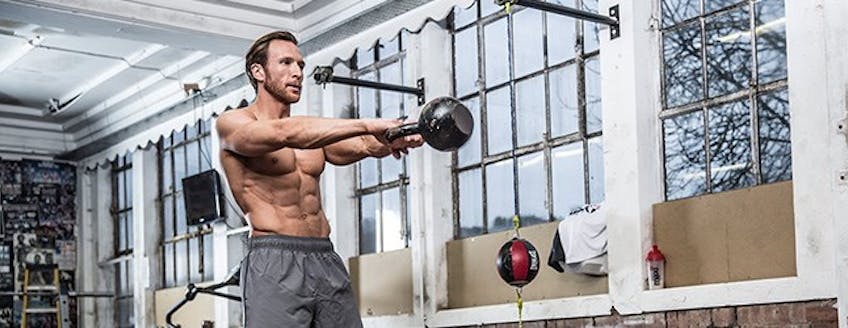Kettlebell Guide
If you look at kettlebells as either misshapen dumbbells or things for Hollywood actresses and their $1000-an-hour trainers, then think again.
They originated in Russia and have actually been around since the 1700s. The design has remained relatively untouched in that time, although you'll be glad to hear that they are not measured in a unit called the pood anymore.
The kettlebell gets its effectiveness from having a centre of mass that can extend beyond the hand and, as you will know from your delt raises, the centre of gravity can have a drastic effect on the difficulty, and the power, of an exercise.
It means that although you can use the bell for presses and curls, it really thrives when it is swung.
1. Swing in the changes
A kettlebell's centre of gravity actually shifts during the course of the exercise and can help you burn a high amount of calories, while building lean muscle all along the posterior chain of your body. Other benefits that you can garner from the bells include an increase in so-called functional strength, as many of the everyday objects you pick up - stuffed cases, bags of cement, even wriggling children - can have a shifting centre of gravity, while kettlebells can also make you more supple and boost your flexibility.
2. How to do it
Stand with your knees slightly bent and your feet a bit wider than your shoulders. Hold the kettlebell by its handle with both hands in between your feet. Without changing the bend in your knees, swing the bell up from between your legs and out to just higher than chest level, keeping your arms straight.
Use paradoxal breathing to help create a virtual weight belt to protect your back. Take in huge gulps of air as the bell swings back to the floor and exhale at the top of the swing. You should find that it's a low-impact move that will really get your blood pumping before the end of your sets and can fire your metabolism for a few hours afterwards.
3. Any advanced variations?
You could try turning the swing into a crush. This builds on the classic move by requiring you to release and catch the kettlebell when the swing is at chest height. This variation will boost your core and chest, help strengthen your grip and improve your coordination. Just remember to take it easy, starting off with a smaller weight than you are used to with the standard swings. Make sure you are on a soft surface in case you do drop it!
Also, you can take advantage of the kettlebell's unique shape to flow from one exercise to the next. Basically, you switch from one exercise to another after one rep without putting the bell down.
4. Try this
Grab a kettlebell with one hand, stand with your feet shoulder-width apart. Swing it between your legs as before, this time when it reaches chest level, flip it behind your forearm and press it overhead in a snatch motion. The flow then continues as, with the kettlebell still overhead, you alter your stance so your toes point away from the weight at 45 degrees. Bend at the waist and slide your opposite arm down your corresponding leg. Pause, to really test your obliques and shoulders, then reverse the move to all the way back to the start.






















